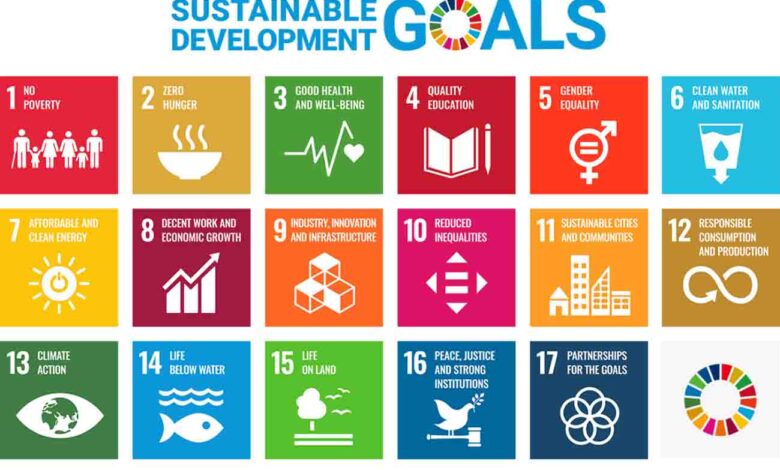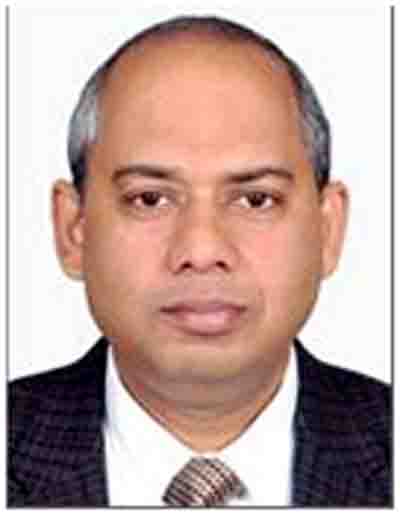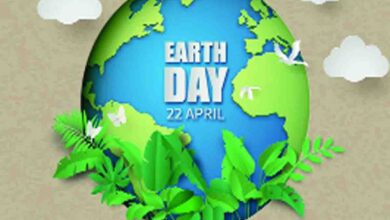Bridging education and Sustainable Development Goals

GUEST COLUMN
 Onkar Singh
Onkar Singh
In 2015, global concerns about poverty, health, well-being, quality education, gender equality, women’s empowerment, access to clean water, etc pushed the member states of the United Nations (UN) to resolve for a better world by 2030. Consequently, the United Nations mandated the Agenda 2030 for Sustainable Development Goals (SDGs) with 17 specific actionable goals to have a peaceful, safe and sustainable future for all.
It is quite pertinent at a time when the ensuing technological and other advancements for the sake of ease and comfort in the life of human beings have started showing the adversities created along with them. The unreasonable exploitation of resources available on the planet Earth gives a clarion call for sustainable development. It is worth appreciating that the collective responsibility has been taken to work for a prosperous, equitable, environmentally friendly and ecologically sustainable world. Undoubtedly, sustainable development challenges are complex, multidisciplinary and interconnected in the existing socio-economic inequities and diversities across the globe. Nevertheless, the appropriate strategies to sensitise people and engage them with commitment and will to create a livable world for their generations can be a game changer. With the targeted deadline of 2030 coming closer, the accomplishment of UN SDGs calls for a people’s movement to contribute their bit towards these goals. Importantly, the concerns about sustainability ought to be ingrained in the thoughts, work styles and lifestyles of individuals so that the perpetuity of the philosophy of sustainable development is everlasting. Educational institutions handling large numbers of students at every level hold great opportunities to engage with youngsters and imbibe them with concerns about sustainable development. Indisputably, there are instances of educational institutions working towards realising 17 SDGs but aggressive initiatives are required to bridge the gap between the education system and sustainable development goals. The consideration of the attribute of sustainability in different forms in the university ranking frameworks is incentivising the educational institutes to reorient their activities concerning the SDGs. As a result, educational institutions are now competing with each other to creatively contribute towards a few or all of the UN sustainable development goals. Times Higher Education Impact rankings of 2024 and QS World University rankings: Sustainability 2024 demonstrate the presence of several Indian private and public universities in the list in higher ranks.
For wider participation of students and teachers at all levels in the education system, it be made mandatory for the institutions to work towards the accomplishment of the SDGs identified by them as per their strength in terms of their potential, regional aspirations, interests of the available human resources, etc. In particular, higher education institutions have the privilege to engage and motivate their reasonably matured, grown-up, and responsible students to combat the challenges faced in sustainable development. The students and teachers in respective institutions can conveniently identify the interconnected economic, social, environmental, and technological challenges faced concerning the chosen SDGs and leverage their knowledge and research acumen to ethically solve them through their academic activities like projects, dissertations, seminars, etc. Besides, educational institutions need to hold seminars, conferences, and workshops and also nurture innovations with respect to SDGs.
The role of educational institutions can vary depending on their levels. The schools at the primary level can offer strong inclusive and equitable foundational education, gender-neutral learning environment, healthy state, hygiene and lifestyle training, and sensitise children towards clean water, sanitation, Mother Nature, environment, ecology and climate changes. The secondary-level institutions have somewhat grown-up children who can understand global challenges and proactively participate in negotiating them. Secondary education institutions can usher programmes focusing on quality education, gender equality, STEM initiatives, health and well-being, decent work and economic growth, reduced inequalities, climate action, responsible consumption and production, peace, justice and strong institutions, innovation and infrastructure, among others.
Higher education institutions (HEIs) have the possibility of appropriately embedding SDGs in their curricula to set up an agenda for research and outreach activities in these perspectives for tackling global challenges. The students in higher education have a coherent understanding to make their inputs in all 17 SDGs in various ways. HEIs should foster the best quality education for lifelong learning abilities, practice the knowledge sought in the formal education system, offer leadership for overall equity in general and gender equality in particular, take public health measures, promote reusing and recycling of resources, feel concerned for climate changes and take initiative to regulate it, strategise for affordable and clean energy, collaborating with industries and individuals for innovations, contribute for creating robust and sustainable infrastructure, skill development, handle potable water crisis, eliminate hunger and have food security, bridge the digital divide, set up an ecological balance, better sanitation and hygiene, secure safe life below water and land, etc and partner with all concerned for creating a better world. The privilege of pooling in the intellectual prowess, creativities and risk-taking abilities of students and teachers in HEIs for tangible and intangible contributions to achieve SDGs. The demographic shifts across the world must be capitalised for the overall good of society. Nonetheless, the difficulties emanating from resource constraints, changing skill requirements, restricted mobility, political polarisation, etc can be easily dodged by the intrinsic strength of educational institutions being the fortress of creativity, neutrality, access, equity and hub of knowledge creation.
This is quite critical due to the continuous push by the United Nations to all countries to achieve the SDGs by 2030. Let us understand the implications of the ongoing development and remodel it into a development that caters to needs without sacrificing the opportunities for future generations and make it a sustainable world through the inexorable 17 SDGs prescribed for the people and the planet. Looking at the global economic activities, conflicts in societies, and climate emergencies, governments, academic regulators, institutional governance, and academics must think of contemplating and laying down a framework mandating education providers to contribute to sustainable development before it’s too late.
The role of the government and others in ensuring sustainable development can be seen from the SDG India Index 2023-24 by NITI Aayog demonstrating Uttarakhand State topping the list. Unarguably, holistic initiatives by the respective governments in coherence with others and participation of people can bring significant improvements in the lives of human beings.
(The author is the vice chancellor of Veer Madho Singh Bhandari Uttarakhand Technical University. Views expressed are personal)






